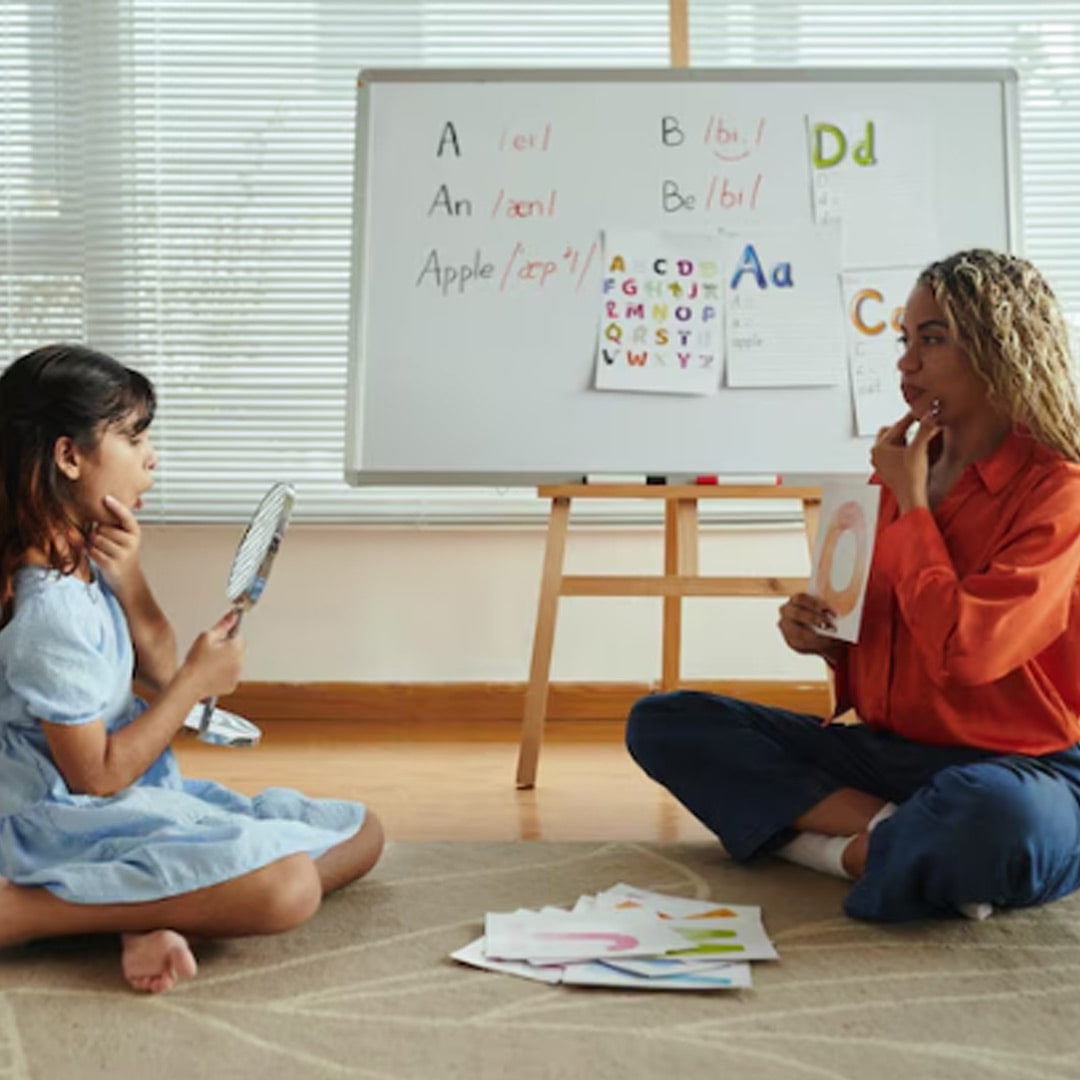

Please enter the code we just sent to whatsapp 91-11-46710500 to proceed
Didn't Receive OTP?

Master the art of teaching decoding with these 10 simple steps, designed to help students build phonics skills, blend sounds, and improve reading fluency.
Phonemic awareness is an early reading strategy that is useful in helping young children identify words that have been written down. When decoding is achieved, children can build proficiency in reading and create a positive learning pattern for a long time.
Below are the 10 tips on the ways of teaching decoding to children If you want to know how to teach decoding to children, check out the following tips:
Teaching decoding begins with establishing what letter sounds children know to avoid confusion between letter knowledge and sounds. Since they can’t decode words, they must learn to identify and manipulate letter sounds. Integrate fun aspects like letter songs, flashcards, games, etc to remind the students what letters sound like.
After children have learned to recognize letter sounds, then help then, how they can create sounds to form words. This is an important decoding strategy. Kids can start with three-letter easy words such as the CVC words like ‘cat or ‘dog’. Demonstrate how they are going to mix all the sounds to read the word before they do it themselves.
This is because short vowel sounds are a wonderful place to start when introducing decoding. This is where CVC words – simple words with short vowels like ‘bat’ or ‘pen’ are helpful to teach blending to children. These simple words create confidence in young readers, they know that they can read.
Read more: Vowel Patterns for Kids: A Comprehensive Guide
Teaching decoding, and phonics games can be incorporated into lessons as a most stimulating activity. Matching words to pictures, bingo or other phonically related games makes learning effective and there is a bonus if these games are fun. Students have better learning experiences especially when learning is disguised as play.
The high-frequency words or the sight words, which can be meet quite often in the texts and in regarding to which it is difficult to find out by making use of the phonics rules. The following words should be memorized by children so that they can recognize them at a glance. Writing is easier and quicker when one knows the words “the” “and” and “she” through the use of flashcards and constant repetition.
As children grow, are going to meet words that are longer and might be harder to read. Explain to them how they can divide the difficult words into smaller components or syllabuses. The decoding technique assists children in reading difficult words such as basketball by breaking them down into segments and then pronouncing all that the segments stand for.
The organization of the words into groups or “words families”, by the last sound of the words, is beneficial for learning the reading decoding. By introducing such things words such as the ‘at’ family/ or the ‘-ing’/ ‘-er’/ ‘-est’ family, children are in a position to guess what a new word is all about because of the known patterns.
Shape Your Kid's Future with Bambinos Classes | Bambinos.live India's No. 1 English Communication Platform For Kids | Click here to Book a Free Class Limited time offer.
In performing decoding approaches, students who are of the visual learning type may benefit from a picture or a drawing done to support the approach. When using new words it is good to accompany these words with pictures that represent their general understanding. It plays a role in showing children how the given word is pronounced, and how it looks, and this assists them in linking the two.
Make sure that you can give children books that are fairly leveled where the letter sounds and word patterns that the children are taught will be contained. These books are particularly for emergent readers, making use of patterned phrases with an accent on decoding. When children read these types of books, they will gain confidence and their reading skills will improve.
Last but not least, promote and reinforce children's early literacy with an emphasis on decoding ability. Reinforcement encourages them to work harder because they get something out of it. For whatever recognition the child may receive for decoding a simple word or a longer lexical item, give them it!
An important approach is to explain to children how they are to read a word or decode it. The ten steps mentioned above are quite easy to implement and will go a long way in enabling one to decode words and make it easier for young learners. From constructing alphabetic knowledge right up to phoneme combination, using decoding strategies will stand the children in good stead which will help them to read competently. Ensure the students practice reading often and relish their efforts because reading is a fun activity to undertake!
1. What are the key elements to focus on when teaching decoding?
Focus on phonemic awareness, letter-sound relationships, and blending sounds into words, to build fluency and confidence.
2. How can I ensure students retain decoding skills over time?
Reinforce skills through consistent practice, blending exercises, and reading decodable texts regularly.
Shape Your Kid's Future with Bambinos Classes | Bambinos.live India's No. 1 English Communication Platform For Kids | Click here to Book a Free Class Limited time offer.